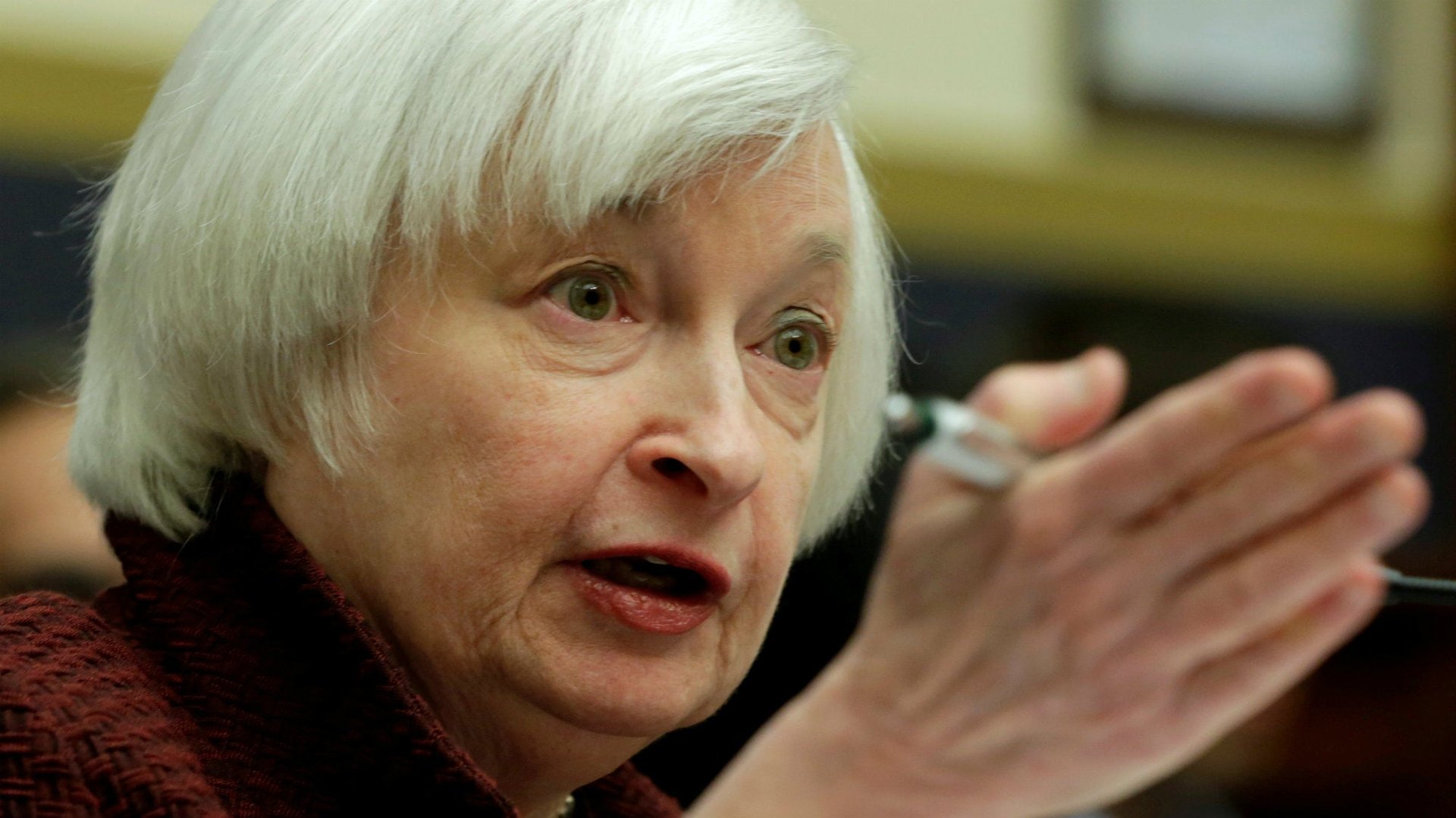The Fed’s rate hike went off without a hitch—until investors read the fine print
For a minute, everything went according to plan.


For a minute, everything went according to plan.
The US Federal Reserve raised its benchmark interest rate by 0.25 percentage points today, as expected. The key rate that banks offer to lend to each other overnight—which underpins the entire American financial system—will now be set between 0.75% and 1%, up from 0.5% to 0.75%.
After going a year without touching rates, this is the second hike in three months. Fed officials made no secret of their intentions this month, with markets gearing up for a return to “normal” rates after a long period of hovering just above zero.
But buried in the details of the Fed decision was something that investors weren’t betting on. Markets lurched—stocks up, bond yields and the dollar down—as soon as people realized that Fed chair Janet Yellen and her colleagues didn’t come off nearly as hawkish as expected.
The Fed’s latest economic projections (pdf) suggest that officials don’t think the economy has switched into a higher gear. The forecasts imply only three interest rate hikes this year (including today’s), which is the same as expected in December. The median long-run annual GDP growth projection is just 1.8%, again the same as it was three months ago. In both cases, analysts thought that more rate hikes and stronger growth projections would be on the menu.
Look at what happened to the 10-year yield on US Treasuries—you can see how traders were caught off-guard. The dollar also took a tumble, falling 1.2% against the Japanese yen at the time of writing.
Last year, the Fed also erred on the dovish side. Officials kicked off 2016 predicting four rate hikes in the year, but instead squeezed in just one quarter-point increase at the very last meeting of the year.
This month’s meeting is the Fed’s second in 2017, but the first with updated economic projections and a press conference, which are normally used to signal policy changes. In effect, the Fed hiked rates at the earliest opportunity, and by signaling this to the market beforehand, it gave off hawkish vibes.
The data suggest that the Fed is close to achieving its dual mandate of stable prices and what it calls “maximum employment.” Last week’s jobs report showed more new jobs were added to the economy than expected, and wage growth was picking up, encouraging a more aggressive central bank stance. What’s more, US president Donald Trump says 3-4% annual GDP growth is achievable, and he’s willing to cut taxes, slash regulation, and increase fiscal spending to get there.
But Yellen, who confirmed today that she has met with the president, has previously said more fiscal stimulus isn’t needed for the sake of the labor market, and that it would be “unwise” to raise rates too slowly if inflation starts to tick up. As a result, the Fed today did exactly what markets expected, on one hand, by raising rates. But on the other, it maintained a cautious tone on the outlook for the US economy.
This is a mild rebuke of Trump’s aggressive pledges on economic growth and jobs. Yellen said today that the Fed hasn’t tried to map out what its response will be to changes in the Trump-led government’s policies, and instead expects to continue along a gradual path rate rises. For now.